
- Home
- News
- Analysis
- States
- Perspective
- Videos
- Education
- Entertainment
- Elections
- World Cup 2023
- Features
- Health
- Business
- Series
- Economy Series
- Earth Day
- Kashmir’s Frozen Turbulence
- India@75
- The legend of Ramjanmabhoomi
- Liberalisation@30
- How to tame a dragon
- Celebrating biodiversity
- Farm Matters
- 50 days of solitude
- Bringing Migrants Home
- Budget 2020
- Jharkhand Votes
- The Federal Investigates
- The Federal Impact
- Vanishing Sand
- Gandhi @ 150
- Andhra Today
- Field report
- Operation Gulmarg
- Pandemic @1 Mn in India
- The Federal Year-End
- The Zero Year
- Premium
- Science
- Brand studio
- Home
- NewsNews
- Analysis
- StatesStates
- PerspectivePerspective
- VideosVideos
- Entertainment
- ElectionsElections
- Sports
- Loading...
Sports - Features
- BusinessBusiness
- Premium
- Loading...
Premium
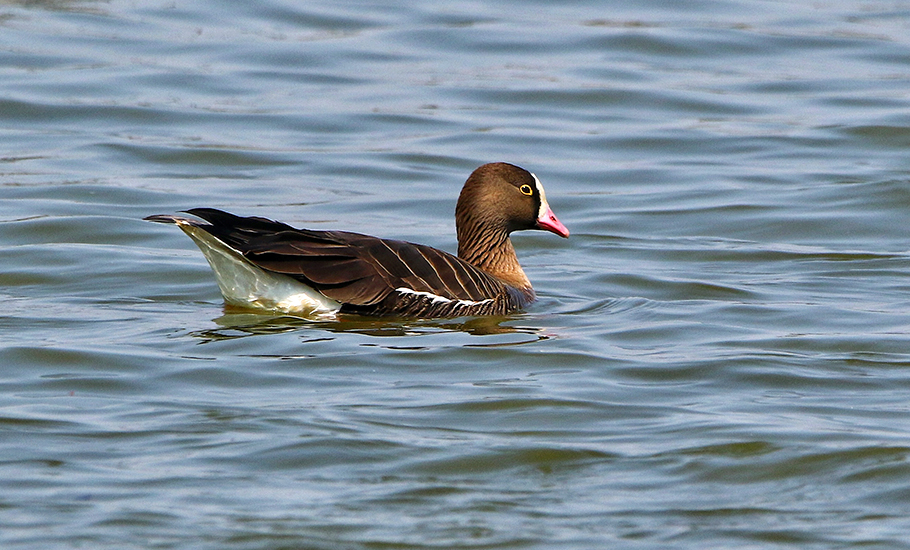
In Photos: Why a lake in Karnataka is celebrating the arrival of a goose with North American address

Birdwatchers have found the perfect reason to head to the picturesque Hadhinaru Lake near Mysuru: Extremely vulnerable and down to just a few left worldwide, the lesser and greater white-fronted geese have been spotted for the first time in years in South India. The geese were spotted with a flock of high-flying bar-headed geese, which fly in every year all the way from the Arctic and...
Birdwatchers have found the perfect reason to head to the picturesque Hadhinaru Lake near Mysuru: Extremely vulnerable and down to just a few left worldwide, the lesser and greater white-fronted geese have been spotted for the first time in years in South India.
The geese were spotted with a flock of high-flying bar-headed geese, which fly in every year all the way from the Arctic and North American expanses, enriching the lake’s biodiversity.
The lesser white-fronted goose has its habitat in the Arctic regions of Eurasia extending from Norway to Siberia. With the onset of winter, they migrate from Central and South Europe to Iran, China, Korea, Japan, and occasionally, Taiwan and Mongolia.
The goose spotted in Hadhinaru Lake could have taken the winter flight with the bar-headed geese. Records show that the lesser white-fronted goose had a few rare sightings in Haryana, Gujarat, Himachal Pradesh and Assam, but not in south India.
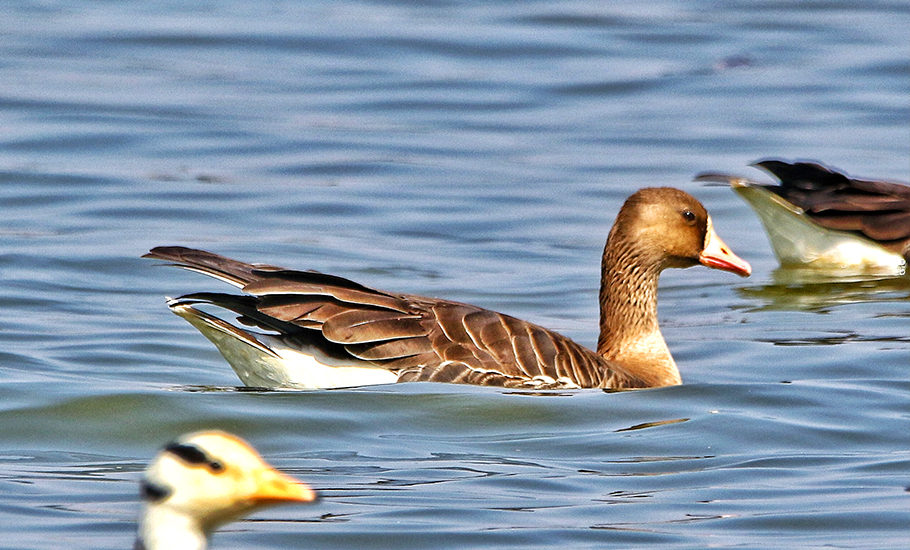
“The lesser white-fronted goose was seen along with the flock of the bar-headed geese. One each of the lesser and greater white-fronted geese was seen. The birds were spotted in the last week of February,” birdwatcher and nature photographer Manoj Raj Urs, who photo-captured the rare bird species, told The Federal.
First in south India
The sighting could perhaps be considered the first in south India but, as Manoj points out, “There was a claim that one bird was spotted near Koppal in 2008. However, no photographs or any other evidence is available.”
One of the most endangered bird species, the less white-fronted goose has faced high mortality due to poaching. Unlike its close relative the white-fronted goose which has adapted to feeding in agricultural land, this species is a habitat specialist.
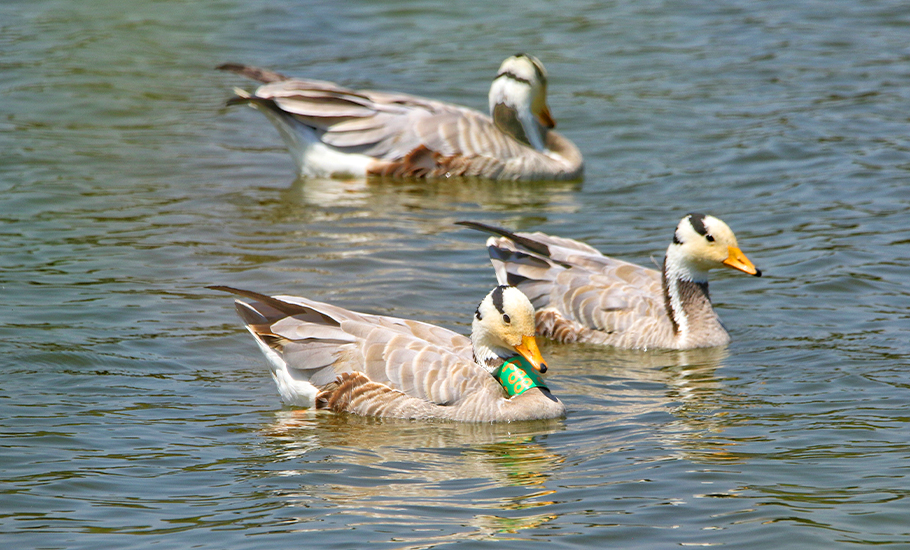
Five years ago, a report showed that barely 100-130 individual birds of the Fennoscandian variety of the species remained worldwide. By October 2020, the numbers had dropped to 90-100. It is in this context that the sighting in the Hadhinaru Lake is significant.
To arrest this alarming decline of the critically endangered goose, an international EU LIFE Nature campaign called the Lesser White-Fronted Goose LIFE project was launched. The objective was to implement concrete conservation actions in Greece, Hungary, Lithuania, Estonia and Finland. Started in October 2020, the project is slated to continue till August 2025.
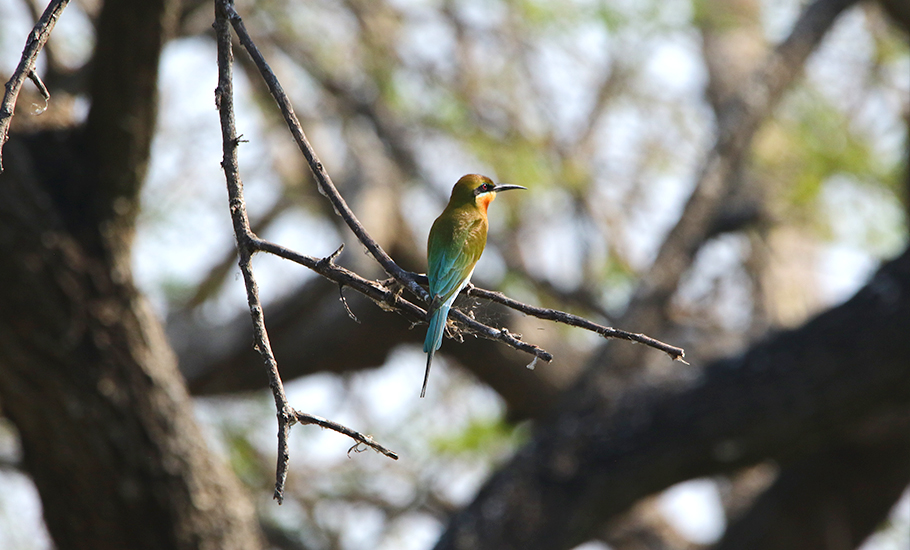
Great white-fronted goose
First sighted in the Dharwad, Karnataka in 2019, the greater white-fronted goose is mainly found in North America. “May be due to climate change along the migration path, it flew off the course and reached the Hadhinaru Lake along with the bar-headed goose,” notes Manoj.
The Hadhinaru Lake is located about 20 km from Mysuru near Nanjangud. This water body has proved ideal for winter migration for the bar-headed geese, designated as ‘Least Concern’ for their declining population by the International Union for Conservation of Nature (IUCN) Red List, a critical indicator of the health of the world’s biodiversity.
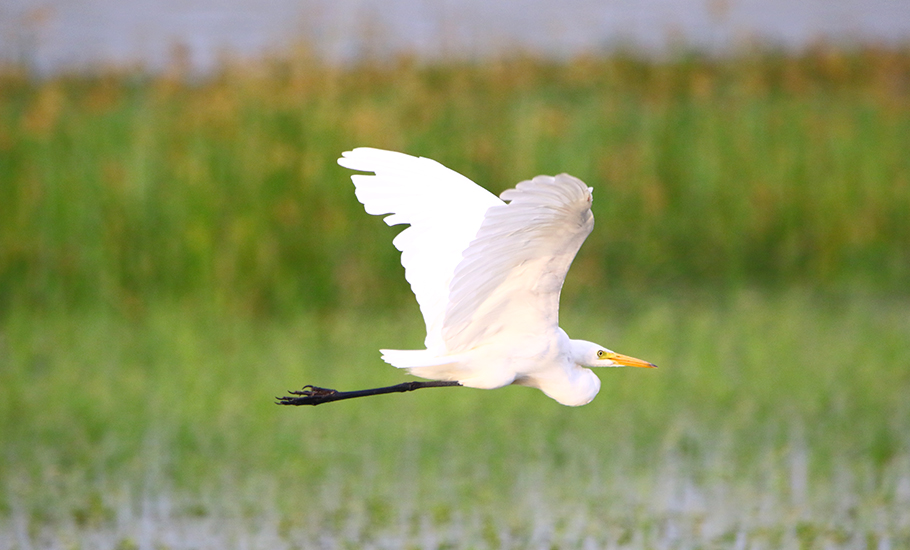
Highest flying birds
Flying from over the Himalayas, the bar-headed goose reach record heights. They are amongst the highest flying birds in the world. Their bodies can sustain such altitudes where the oxygen levels are low. Despite these advantages, these birds have been victims of degrading wetlands, polluted water bodies and other extreme eco challenges.
“We are losing bird habitats at an alarming rate. Saving these habitats through intelligent town planning and eco development is critical,” says Bengaluru-based ornithologist MB Krishna.
Migratory patterns have been established over millions of years, he notes, and these predate the advent of man. “New research is now throwing up more data on these patterns, the flying altitude and range of the birds. While migration happens in big numbers, stray birds do get dispersed and spread out at the beginning and end of the process,” he explains.
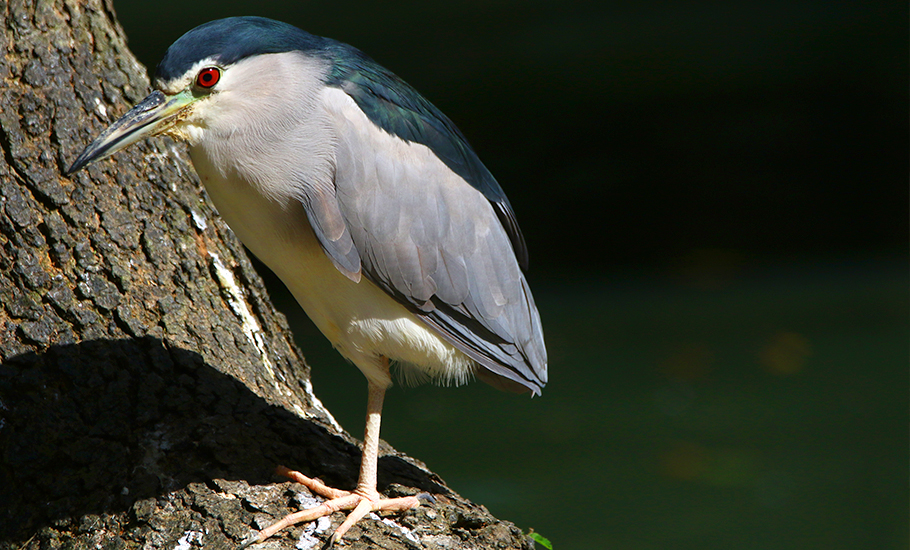
During the breeding season, these birds prefer high-altitude lakes, but migrate to freshwater lakes, rivers and streams for their winter habitats. Arriving in the months of November and December in large flocks, the bar-headed geese settle in the Hadhinaru lake but also head to the Krishnaraja Sagar and Kabini Dams spread across Mysuru, Mandya and Chamarajanagar districts of Karnataka.
Scientifically known as the Anser indicus, the goose breeds in Central Asia in colonies of thousands near mountain lakes. It lays about three to eight eggs at a time in a ground nest. Grazing on short grass near high-altitude lakes during their summer habitat period, this bird species stays put in Tibet, Kazakhstan, Mongolia and parts of Russia before heading south to peninsular India over the Himalayas.
Radio-collared birds
Although the bar-headed geese arrive every year in big numbers, what caught the attention this time was a bird with a neck band. The band with a numbered metal or plastic tag attached to the bird’s leg or wing helps track its movements and life history. “Local birdwatchers identified from the band that the same bird had come last year too, taking the same route.”
Located near the Kabini river in Nanjangud, the Hadhinaru Lake has an ecosystem ideal for these migratory birds. The bar-headed geese stand out for the black bars on their heads. Their goose honking call is a clear sign that they have come to roost in big numbers. “The lake is huge with large swathes of paddy fields adjoining it. There are plenty of local birds as well,” says Manoj.
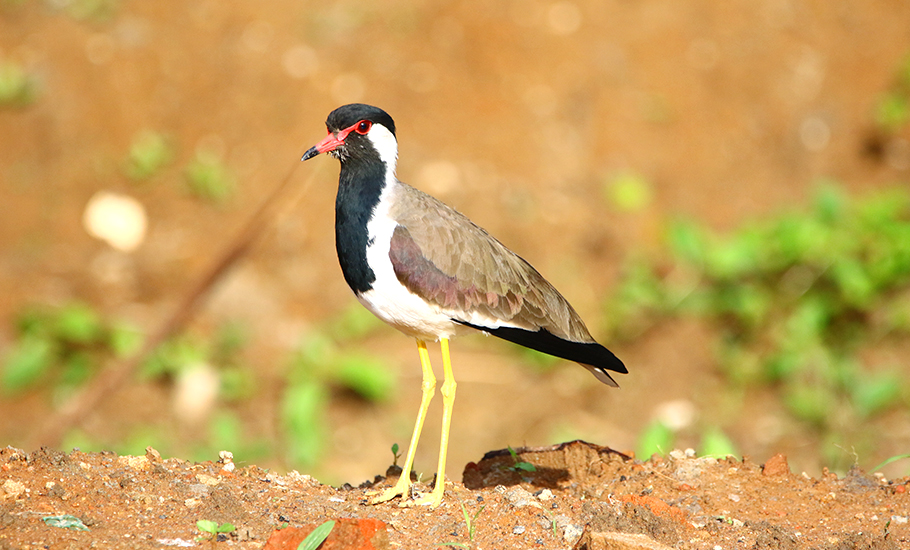
The lake and the wetlands are the goose’s resting area. In the night, they feed on the paddy grains after the post-harvest season. Local farmers say their droppings serve as good manure for the crops.
Besides the geese, local bird-watchers have spotted the Blue-Tailed Bee-Eater, Black-Crowned Night Heron, Red Wattled Lapwing, Breasted Kingfisher, Night Heron, Common Coot, Painted Ibis, River Tern, Large and Little Egret, Purple Moorhen and other species.

